The section of land on either side of Allt-yr-yn Avenue and Ridgeway has long been known as Little Switzerland due to its high vantage point and 'Double View' of Twmbarlwm, Machen and Henllys to the north and the channel to the south. This moniker has been around for at least 160 years.
Looking through the newspapers there's a mention of name Little Switzerland in the Western Mail in 1869 during an inspection of a reservoir (probably Ynys-y-fro) by the Newport and Pillgwenlly Water Works Company (although The Welshman Newspaper in 1835 referred to the entirety of Wales as 'little Switzerland').
The charming scenery of the spot, which has been called not inappropriately Little Switzerland, the invigorating breeze, and ample refreshments, changed the otherwise irksome task of the directors into a proceeding of unusual gratification.
— Western Mail, Wednesday 7th July, 1869
During a meeting of the Associated Chambers of Commerce in September 1892 Little Switzerland was mentioned as a place just ten minutes from the busy commercial town and busy port of Newport where one could see "beautiful sylvan scenery such as can be rarely excelled in the heart of the country".
The area back then was largely untouched save for the canal, a brick works and quarry and the Ynys-y-fro Reservoir but in the 1890s an Infectious Diseases Hospital was built at Allt-yr-yn. There were objections in May 1893 with 700 ratepayers signed a petition with one of the objections being a concern about it affecting a "favourite promenade". Nevertheless, the hospital was constructed (its location can be seen on the map below) and today is the site of Allt-yr-yn Heights.
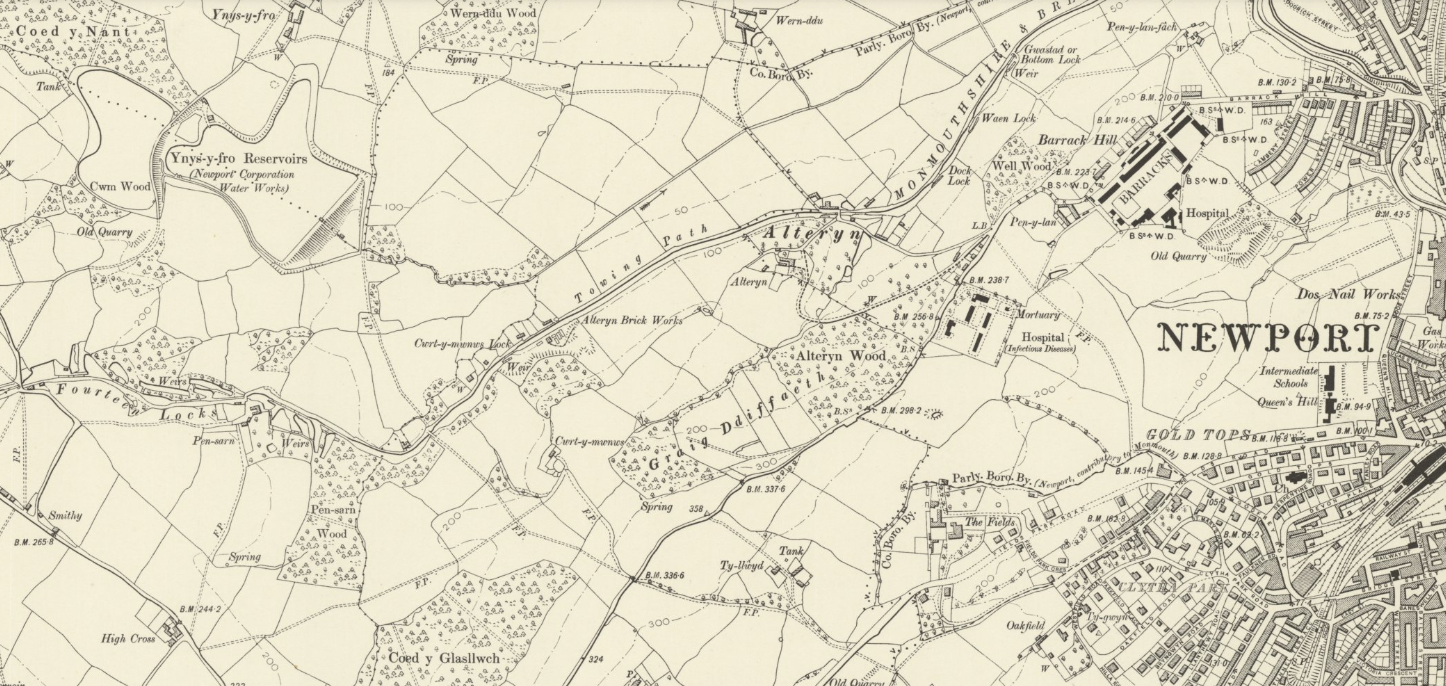
In a letter to the South Wales Argus in March 1894, a resident by the name of 'Sleepy Villager' called for a system of tramways to run from Westgate to the Cemetery to allow people to walk around Little Switzerland.
Dear Sir,
While regretting "Cardiffian's" lack of appreciation of our beautiful hill, and commiserating with him for having to live in such a flat and monotonous hamlet, I cannot but think it would be an additional boon to all Newportonians if we had a system of tramways, as suggested, from the Westgate to the Cemetery. Most of the increasing number of inhabitants bordering this road would gladly pay 2d for a ride up and 1d for going down, while it would bring the beautiful walks round Little Switzerland and Henllis (sic) nearer to thousands of our fellow townspeople, who are practically, ignorant of the delightful scenery with which they are surrounded.
By using an endless rope system similar to that at Highgate, where, I believe, the gradient is quite steep, very little extraneous power would be necessary, and the thing ought to be made to pay.
Yours truly,
A SLEEPY VILLAGER
Newport, March 2, 1894
— South Wales Argus, Monday 5th March, 1894

In 1895, the weekly 'Seen and Heard' column in the South Wales Argus had a little dig at Cardiff...
The glorious weather of Good Friday led many people out into the lovely district which surrounds Newport. Little Switzerland had is full complement of holiday-makers, and the neighbourhood of the reservoir was swarmed. How I pity those poor people at Cardiff, who have to go miles before they can find a lovely district such as Newport people have almost at their doors. We can give Cardiff points in athletics and in natural beauty.
— South Wales Argus, Saturday 13th April, 1895
Despite being a scenic location, it wasn't without some problems.
The fields in the neighbourhood of the Jew's Wood, and those leading from Fields Road to Little Switzerland are again being infested with tramps, loafers, and hooligans. The attendance of the police, writes a correspondent, would be appreciated.
— South Wales Argus, Saturday 19th June, 1909

Rambles in Gwent
In July 1922, the South Wales Argus published a walking guide to the 'most frequented viewpoint near Newport' along with illustration. This guid is published below.
By the Open Road to Beauty Spots and Historic Scenes
What is the most frequented viewpoint near Newport? Most people, we fancy, would vote for that gat in Barrack Lane which overlooks "Little Switzerland". Thither we proceeded on a recent evening, when the rain clouds had rolled eastwards, and the western sky held the promise of fine weather.
The horizon, in every direction, showed crystal clear. Over the Channel, the windows of Clevedon flashed back the sunbeams. Further west, the Holms and Penarth Head were quite distinct. But when we passed through the wicket gates, and stood, with the prospect uninterrupted from Machen to the distant Skirrid, we were at once overawed and up lifted.
The tide of industrialism has swept from Newport in two main directions, north and north-west, leaving this peaceful district sweet and smokeless. NO railway encroaches here; no factory belches forth its fumes' but the quiet landscape swells and dips in rhythmic undulations. Trees, meadows, and cottages take their part in the exquisite design and, crowning work of all, the noble ridge of hills sweeps across the sky, like a divine brush stroke.
But too many Newport people are content with the Pisgah emotion. Having viewed the Promised Land, they retreat to their brick-and-mortar wilderness, and die. Otters are satisfied with the canal walk. But we want to introduce them to the wonderland beyond, as it is in these July days, flowing with milk and honeysuckle.
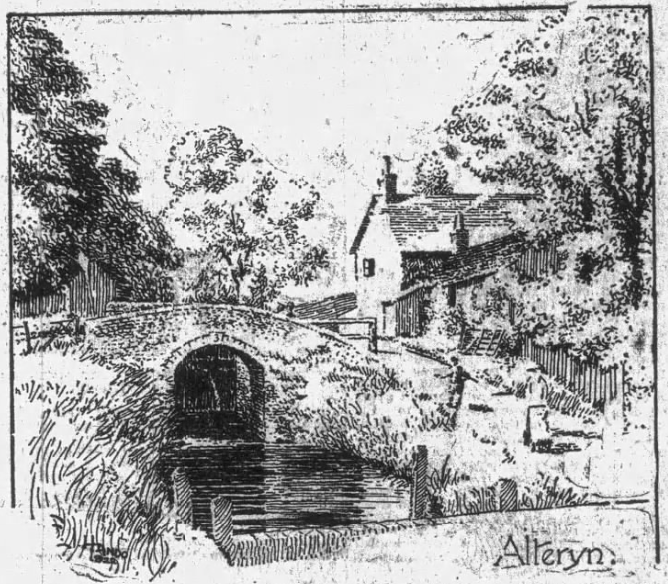
We crossed the canal, and, passing through the gate opposite the bridge, made our way across the meadows towards the reservoir. A pretty path, gay with dog-roses, leads around to the right of the reservoir into a field crossed by several paths. We chose the one leading to the left, and passing through a farmyard, soon found ourselves on the causeway between the two reservoirs. In this most bracing position we stayed a while, to cheer with our interest the patient anglers, but, the trout refusing to die, we resumed our stroll, and when almost on the canal bank again, turned to the right along the road which leads to Twyn Barllwm. A pleasant jaunt of half-a-mile brought us to that junction of roads where stand the old farm of Croes-Llan-Fro, and the quaint little house known as Maes-y-Coed. This corner is a splendid starting point for many rambles, and is especially popular in bluebell time.
Our road lay to the right of Maes-y-Coed Cottage, and taking the first turning to the right, we breathed the fragrance of one of the sweetest lanes in Gwent. The hedges rose to a great height, and in places were bright with the shell-pink of dog-roses and the festoons of honeysuckle. At one sheltered corner, where grew a mass of meadowsweet, the mingled odours were overpoweringly sweet, and seemed to fill the bees with a frenzied energy. Our road finally joined another which, a few yards to the left, was crossed by a brook, and here we ascended the hill and turned into Bettws churchyard. As the sun was dipping rapidly we rested by the tiny toy church and watched while the mountains changed in hue from green to a lovely mauve. Then, with the sky behind us crimsoning, we took the meadow path opposite the church gate, and, passing Ynys-y-Fro on our right, made our way through the comely hay fields to Allt-yr-Yn.
Allt-yr-Yn at twilight. The pale half moon swims in a silver-blue sky; a warm glow lingers in the west. The canal slumbers, its velvety shadows streaked with silver bars. Bridge and cottages are bathed in a ghostly half-light, while the chestnut trees, solemn and massive, tower above in sombre majesty. As we climb the hill, a holy calm seems to settle over the hamlet, and, still under its influence, we wanter homewards with quiet minds.
Distance: Four Miles.
— South Wales Argus, Saturday 15th July, 1922

A Never-to-be-forgotten Walk Near Newport
An article in two Worcester papers — the Worcestershire Echo and Worcestershire Chronicle — mentions walking in Newport and discovering Little Switzerland.
From ‘Little Tyrol’ to ‘Little Switzerland’ is rather a big jump, for the delectable neighbourhood which I have now reached is in Monmouthshire. Here it is not a village, but a whole district which is under consideration, with canal walks which recall Llangollen and give one a startingly new idea of these waterways.
A walk I took a few years ago was from Newport to Pontypool — on the canal bank all the way. It was a pleasant experience, but I didn’t not discover justification for the name Little Switzerland until I had climbed the mountains. That ramble in solitude of the hilltops will never fade from memory. From the plan there was nothing particularly attractive in the mountain, nothing to suggest the wonderful picture which opened out before me as I wended my way from one eminence to another.
— South Wales Argus, Monday 30th June, 1924
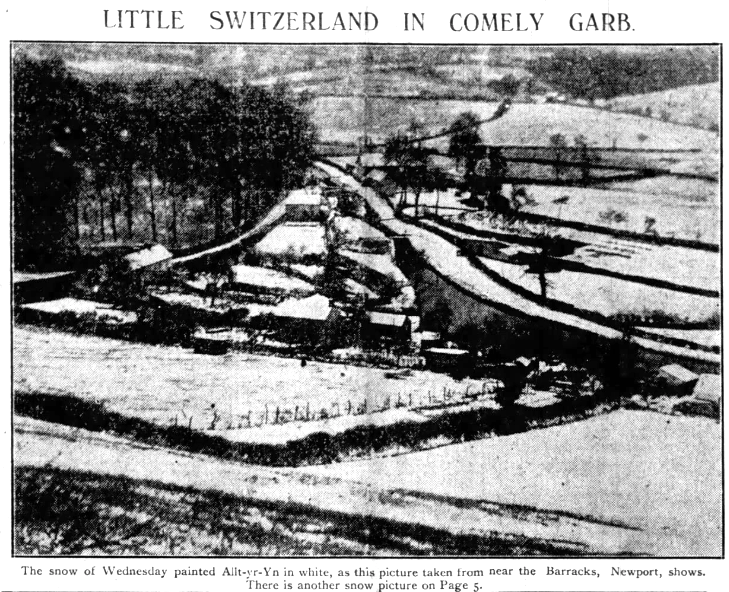
A New and Improved Road
In November 1922, the Corporation decided to proceed with a new and improved road between Allt-yr-yn Road (near St Mark’s Crescent) and Risca Road (near Glasllwch). The cost was estimated to be £33,000.
The road in question, over the part of its length, will take a course through the fields at the back of Allt-yr-Yn Hospital, and will join Barrack Lane about 200 yards east of the Black Ash Path. From there it will pursue the same course as the Barrack Hill Lane to Risca Road.
This road is to be 50 feet wide with a 10ft footway on either side, leaving 30 feet of carriageway. The Ministry of Transport have provisionally promised to contribute half the cost. The land necessary for the road is to be given free of charge.
At the same time as the road was going to be built an open space overlooking Little Switzerland and the Bristol Channel was to be acquired. This is the space that remains there today.
Negotiations are also on foot for the acquisition of some eight or ten acres of the land near the black ash path, overlooking Little Switzerland and the Bristol Channel. It is hoped that an open space can be arranged for here to which the public will have access at all times. The new road will cut through this open space.
— South Wales Argus, Friday 24th November, 1922

Newport’s Beauty Spot to be Kept Intact
In addition to the land acquired when building the new road, the Tredegar Estate agreed that the low-lying land which ‘gave the charming prospect which every visitor to Newport admired as one of the most beautiful spots they had seen in all their travels, should be allocated as a reservation for all time’.
— South Wales Argus, June 14th, 1927
By 1928, a scheme comprising of 627 acres was earmarked for preservation of ‘what is a rare amenity to an industrial town’.



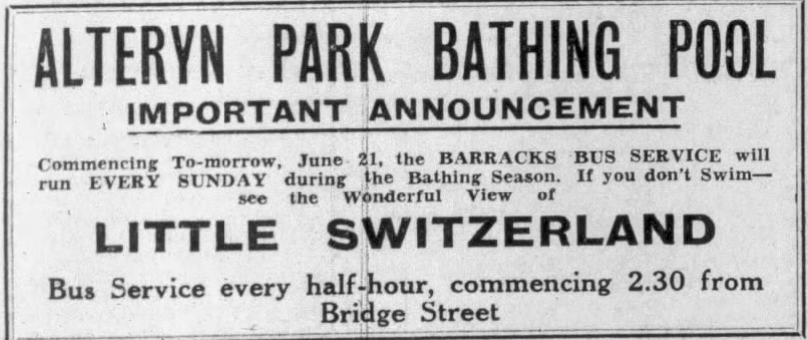
Big Plans
In April 1936, the council approved a town-planning scheme which would include ‘the whole of the famous “Little Switzerland”. This likely marks the start of the houses being built along Allt-yr-yn Road, Ridgeway and adjoining streets. The open space still remains and despite the M4, Rogerstone and Bettws, you can still appreciate similar views to those that were written about in the 1860s.
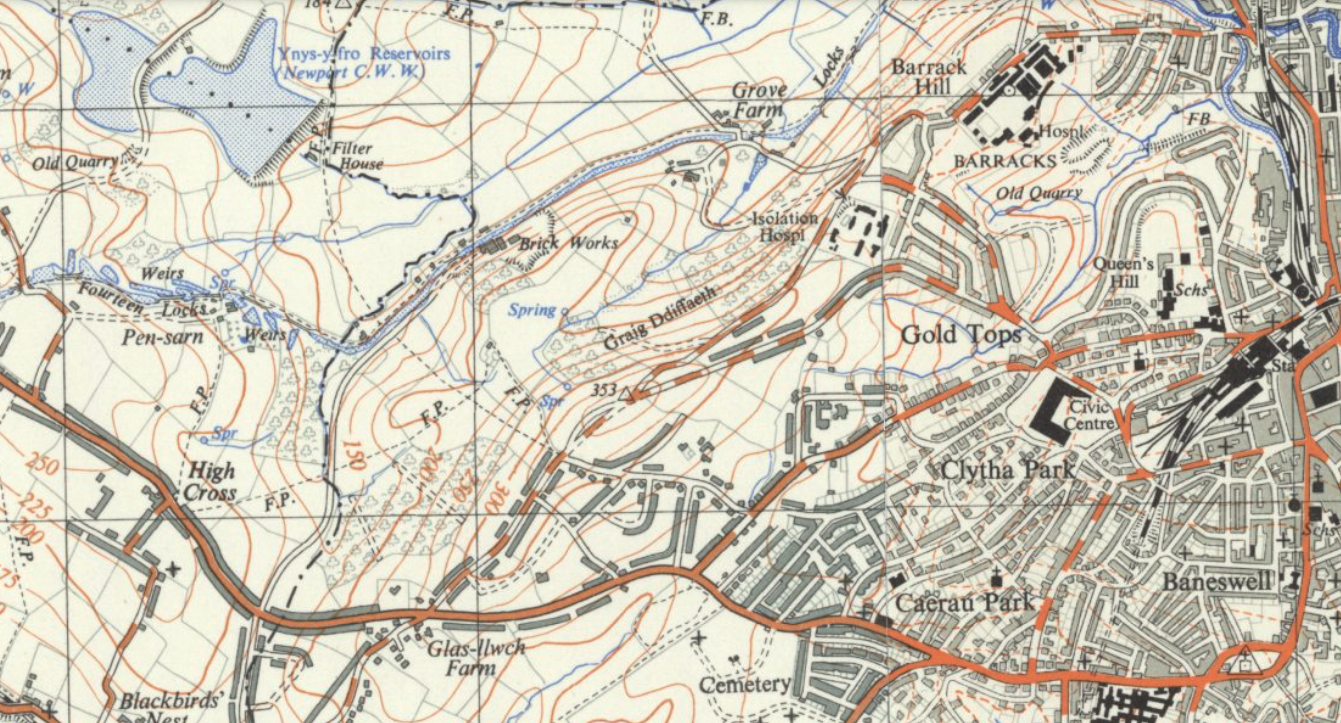


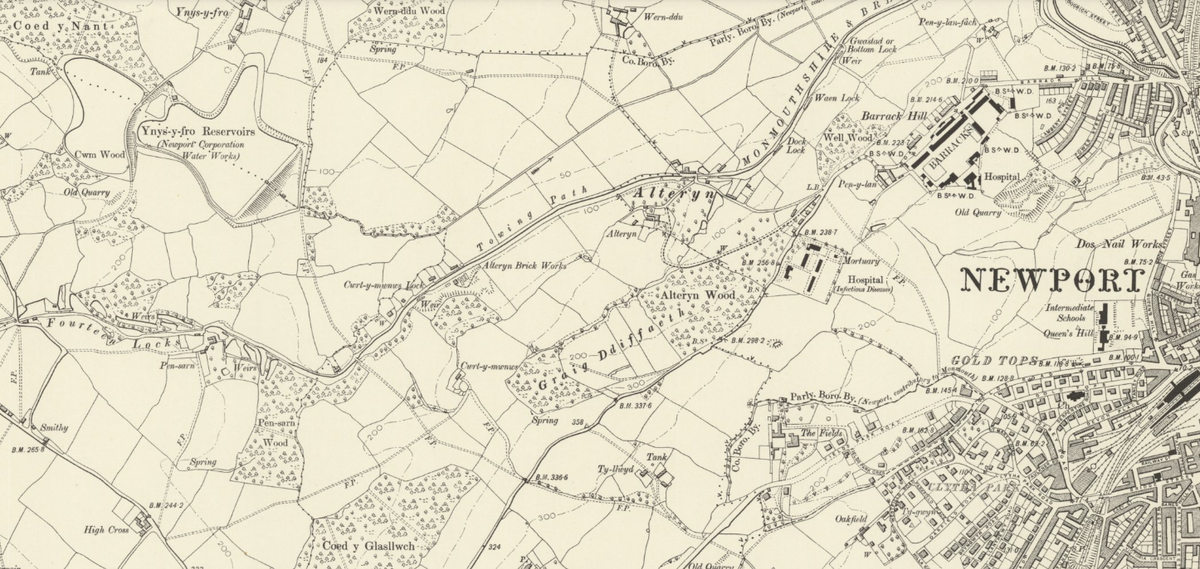
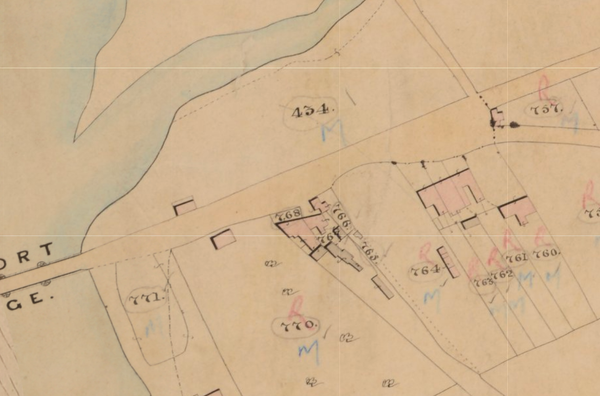
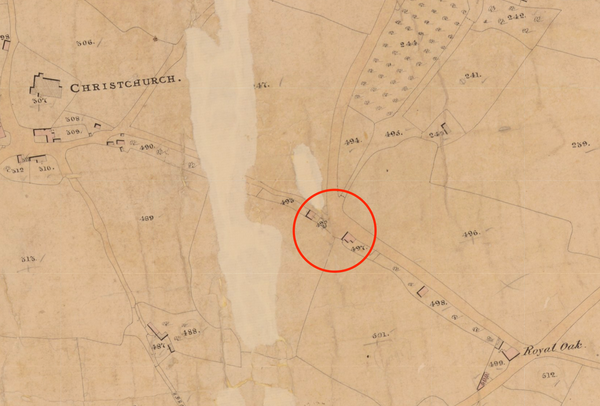
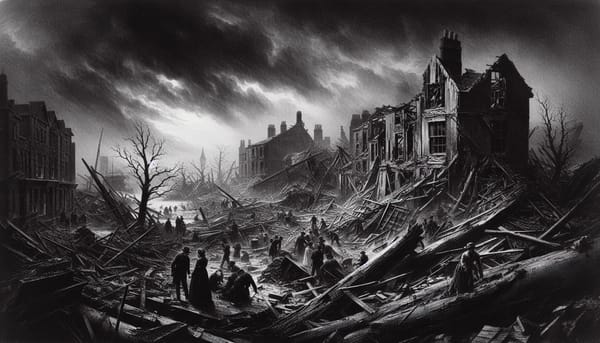
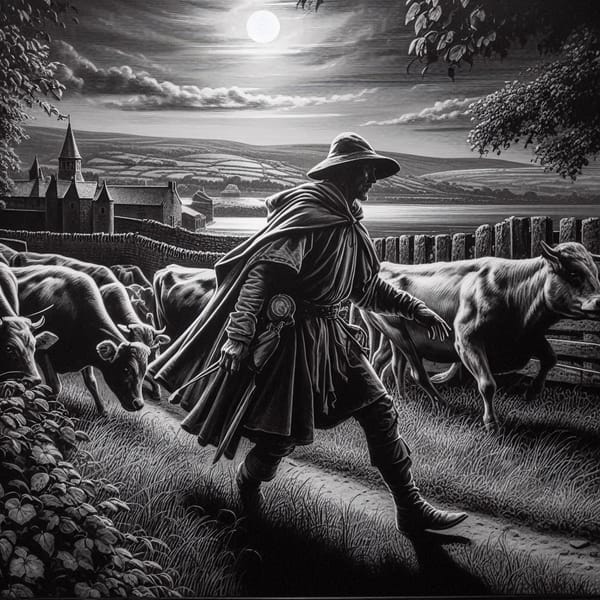
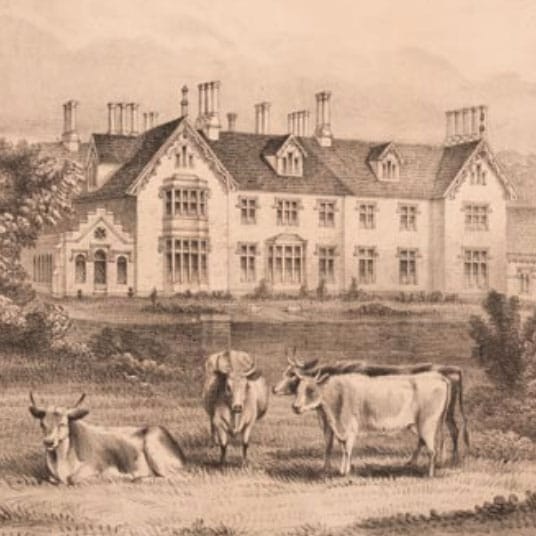

Member discussion